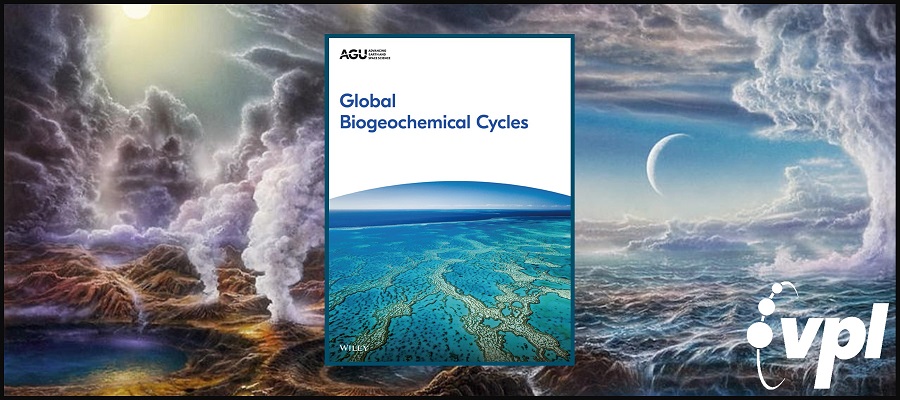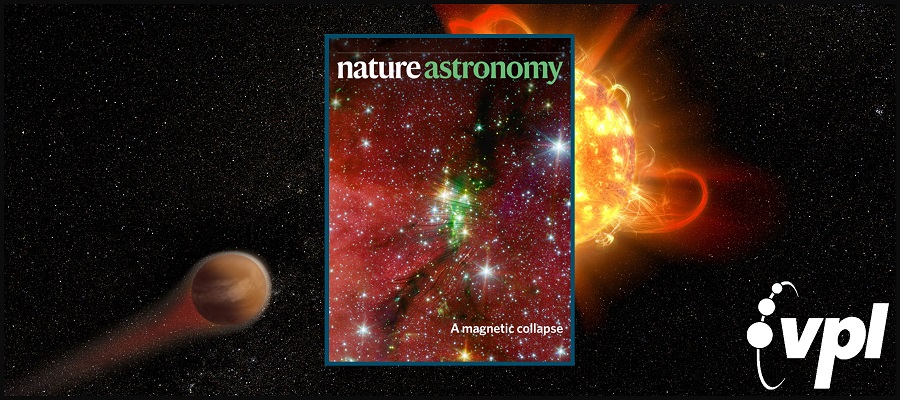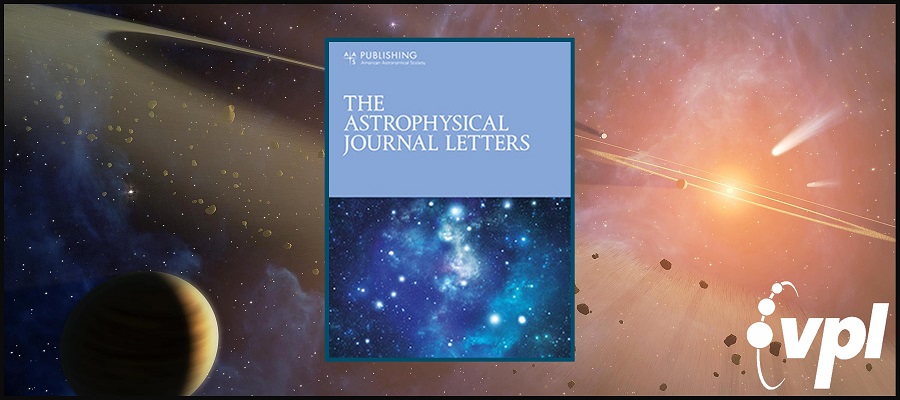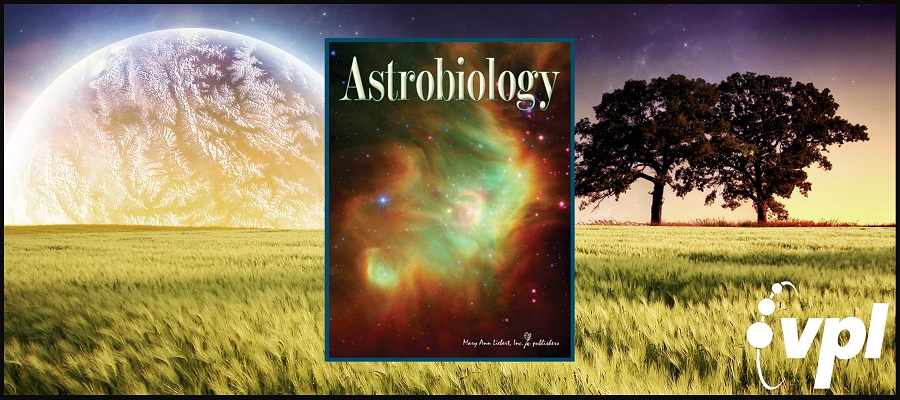Earth’s carbon cycle maintains a stable climate and biosphere on geological timescales. Feedbacks regulate the size of the surface carbon reservoir, and on million‐year timescales the carbon cycle must be in steady state. A major question about the early Earth is whether carbon was cycled through the surface reservoir more quickly or slowly than it is today. The answer to this question holds important implications for Earth’s climate state, the size of the biosphere through time, and the expression of atmospheric biosignatures on Earth‐like planets. Here, we examine total carbon inputs and outputs from the Earth’s surface over time. We find stark disagreement between the canonical histories of carbon outgassing and carbon burial, with the former implying higher rates of throughput on the early Earth and the latter suggesting sluggish carbon cycling. We consider solutions to this apparent paradox and conclude that the most likely resolution is that high organic burial efficiency in the Precambrian enabled substantial carbon burial despite limited biological productivity. We then consider this model in terms of Archean redox balance and find that in order to maintain atmospheric anoxia prior to the Great Oxidation Event, high burial efficiency likely needed to be accompanied by greater outgassing of reductants. Similar mechanisms likely govern carbon burial and redox balance on terrestrial exoplanets, suggesting that outgassing rates and the redox state of volcanic gases likely play a critical role in setting the tempo of planetary oxygenation.
We present the occurrence rates for rocky planets in the habitable zones (HZs) of main-sequence dwarf stars based on the Kepler DR25 planet candidate catalog and Gaia-based stellar properties. We provide the first analysis in terms of star-dependent instellation flux, which allows us to track HZ planets. We define ?? as the HZ occurrence of planets with radii between 0.5 and 1.5 R? orbiting stars with effective temperatures between 4800 and 6300 K. We find that ?? for the conservative HZ is between ${0.37}_{-0.21}^{+0.48}$ (errors reflect 68% credible intervals) and ${0.60}_{-0.36}^{+0.90}$ planets per star, while the optimistic HZ occurrence is between ${0.58}_{-0.33}^{+0.73}$ and ${0.88}_{-0.51}^{+1.28}$ planets per star. These bounds reflect two extreme assumptions about the extrapolation of completeness beyond orbital periods where DR25 completeness data are available. The large uncertainties are due to the small number of detected small HZ planets. We find similar occurrence rates between using Poisson likelihood Bayesian analysis and using Approximate Bayesian Computation. Our results are corrected for catalog completeness and reliability. Both completeness and the planet occurrence rate are dependent on stellar effective temperature. We also present occurrence rates for various stellar populations and planet size ranges. We estimate with 95% confidence that, on average, the nearest HZ planet around G and K dwarfs is ~6 pc away and there are ~4 HZ rocky planets around G and K dwarfs within 10 pc of the Sun.
Low-mass stars show evidence of vigorous magnetic activity in the form of large flares and coronal mass ejections. Such space weather events may have important ramifications for the habitability and observational fingerprints of exoplanetary atmospheres. Here, using a suite of three-dimensional coupled chemistry–climate model simulations, we explore effects of time-dependent stellar activity on rocky planet atmospheres orbiting G, K and M dwarf stars. We employ observed data from the MUSCLES campaign and the Transiting Exoplanet Survey Satellite and test a range of rotation period, magnetic field strength and flare frequency assumptions. We find that recurring flares drive the atmospheres of planets around K and M dwarfs into chemical equilibria that substantially deviate from their pre-flare regimes, whereas the atmospheres of G dwarf planets quickly return to their baseline states. Interestingly, simulated O2-poor and O2-rich atmospheres experiencing flares produce similar mesospheric nitric oxide abundances, suggesting that stellar flares can highlight otherwise undetectable chemical species. Applying a radiative transfer model to our chemistry–climate model results, we find that flare-driven transmission features of bio-indicating chemical species, such as nitrogen dioxide, nitrous oxide and nitric acid, show particular promise for detection by future instruments.
Metal compounds abundant on Early Earth are thought to play an important role in the origins of life. Certain iron-sulfur minerals for example, are proposed to have served as primitive metalloenzyme cofactors due to their ability to catalyze organic synthesis processes and facilitate electron transfer reactions. An inherent difficulty with studying the catalytic potential of many metal compounds is the wide range of data and parameters to consider when searching for individual minerals and ligands of interest. Detecting mineral-ligand pairs that are structurally analogous enables more relevant selections of data to study, since structural affinity is a key indicator of comparable catalytic function. However, current structure-oriented approaches tend to be subjective and localized, and do not quantify observations or compare them with other potential targets. Here, we present a mathematical approach that compares structural similarities between various minerals and ligands using molecular similarity metrics. We use an iterative substructure search in the crystal lattice, paired with benchmark structural similarity methods. This structural comparison may be considered as a first stage in a more advanced analysis tool that will include a range of chemical and physical factors when computing mineral-ligand similarity. This approach will seek relationships between the mineral and enzyme worlds, with applications to the origins of life, ecology, catalysis, and astrobiology.
Variations in the reflective properties of the bulk material that comprises the surface of land-dominated planets will affect the planetary energy balance by interacting differently with incident radiation from the host star. Furthermore, low-mass cool stars, such as nearby M8V dwarf TRAPPIST-1, emit a significant fraction of their flux in longer wavelengths relative to the Sun in regions where terrestrial materials may exhibit additional variability in albedo. Using the Community Earth System Model, we investigate the effect of the composition of the land surface and its albedo on planetary climate in the context of spatially homogeneous, entirely land-covered planets with dry atmospheres at the orbital separation of TRAPPIST-1d, TRAPPIST-1e, and TRAPPIST-1f. We use empirically derived spectra of four terrestrial compositional endmembers (granite, calcite, aridisol, and dune sand) and a composite spectrum of TRAPPIST-1 for these simulations and compare these model outputs to an aquaplanet and several Sol-spectrum control cases. We report a difference of approximately 50 K in global mean surface temperature, variations in atmospheric rotational features, and a reduction in cross-equatorial heat transport between scenarios in which materials with higher albedo in the infrared (calcite and dune sand) were used and those with more absorptive crustal material, such as granite or dry soils. An aquaplanet TRAPPIST-1d scenario results in an unstable runaway greenhouse regime. Therefore, we demonstrate that determining the composition and albedo of continental landmasses is crucial for making accurate determinations of the climate of terrestrial exoplanets.
We simulate the coupled stellar and tidal evolution of short-period binary stars (orbital period $P_{orb} lsim$8 days) to investigate the orbital oscillations, instellation cycles, and orbital stability of circumbinary planets (CBPs). We consider two tidal models and show that both predict an outward-then-inward evolution of the binary’s semi-major axis abin and eccentricity ebin. This orbital evolution drives a similar evolution of the minimum CBP semi-major axis for orbital stability. By expanding on previous models to include the evolution of the mass concentration, we show that the maximum in the CBP orbital stability limit tends to occur 100 Myr after the planets form, a factor of 100 longer than previous investigations. This result provides further support for the hypothesis that the early stellar-tidal evolution of binary stars has removed CBPs from short-period binaries. We then apply the models to Kepler-47 b, a CBP orbiting close to its host stars’ stability limit, to show that if the binary’s initial $e_{bin} gsim$0.24, the planet would have been orbiting within the instability zone in the past and probably wouldn’t have survived. For stable, hypothetical cases in which the stability limit does not reach a planet’s orbit, we find that the amplitudes of abin and ebin oscillations can damp by up to 10% and 50%, respectively. Finally, we consider equal-mass stars with Porb= 7.5 days and compare the HZ to the stability limit. We find that for stellar masses $lsim0.12M_{odot}$, the HZ is completely unstable, even if the binary orbit is circular. For $e_{bin} lsim$0.5, that limit increases to 0.17M?, and the HZ is partially destabilized for stellar masses up to 0.45M?. These results may help guide searches for potentially habitable CBPs, as well as characterize their evolution and likelihood to support life after they are found.
The orbital architecture of the solar system is thought to have been sculpted by a dynamical instability among the giant planets. During the instability a primordial outer disk of planetesimals was destabilized and ended up on planet-crossing orbits. Most planetesimals were ejected into interstellar space, but a fraction were trapped on stable orbits in the Kuiper Belt and Oort cloud. We use a suite of N-body simulations to map out the diversity of planetesimals’ dynamical pathways. We focus on two processes: tidal disruption from very close encounters with a giant planet, and loss of surface volatiles from repeated passages close to the Sun. We show that the rate of tidal disruption is more than a factor of 2 higher for ejected planetesimals than for surviving objects in the Kuiper Belt or Oort cloud. Ejected planetesimals are preferentially disrupted by Jupiter and surviving ones by Neptune. Given that the gas giants contracted significantly as they cooled but the ice giants did not, taking into account the thermal evolution of the giant planets decreases the disruption rate of ejected planetesimals. The frequency of volatile loss and extinction is far higher for ejected planetesimals than for surviving ones and is not affected by the giant planets’ contraction. Even if all interstellar objects were ejected from solar system–like systems, our analysis suggests that their physical properties should be more diverse than those of solar system small bodies as a result of their divergent dynamical histories. This is consistent with the characteristics of the two currently known interstellar objects.
Photosynthesis is an ancient metabolic process that began on early Earth and offers plentiful energy to organisms that can utilize it such that that they achieve global significance. The potential exists for similar processes to operate on habitable exoplanets and result in observable biosignatures. Before the advent of oxygenic photosynthesis, the most primitive phototrophs, anoxygenic phototrophs, dominated surface environments on the planet. Here, we characterize surface polarization biosignatures associated with a diverse sample of anoxygenic phototrophs and cyanobacteria, examining both pure cultures and microbial communities from the natural environment. Polarimetry is a tool that can be used to measure the chiral signature of biomolecules. Chirality is considered a universal, agnostic biosignature that is independent of a planet’s biochemistry, receiving considerable interest as a target biosignature for life-detection missions. In contrast to preliminary indications from earlier work, we show that there is a diversity of distinctive circular polarization signatures, including the magnitude of the polarization, associated with the variety of chiral photosynthetic pigments and pigment complexes of anoxygenic and oxygenic phototrophs. We also show that the apparent death and release of pigments from one of the phototrophs is accompanied by an elevation of the reflectance polarization signal by an order of magnitude, which may be significant for remotely detectable environmental signatures. This work and others suggest that circular polarization signals up to ∼1% may occur, significantly stronger than previously anticipated circular polarization levels. We conclude that global surface polarization biosignatures may arise from anoxygenic and oxygenic phototrophs, which have dominated nearly 80% of the history of our rocky, inhabited planet.
Mantle convection and, by association, plate tectonics is driven by the transport of heat from a planetary interior. This heat comes from the internal energy of the mantle and from heat flowing into the base of the mantle from the core. Past investigations of such mixed mode heating have revealed unusual behavior that confounds our intuition based on end?member cases. In particular, increased internal heating leads to a decrease in convective velocity. We investigate this behavior using a suite of numerical experiments and develop a scaling for velocity in the mixed heating case. We identify a planform transition, as internal heating increases, from sheet?like to plume?like downwellings that impacts heat flux and convective velocities. More significantly, we demonstrate that increased internal heating leads not only to a decrease in internal velocities but also a decrease in the velocity of the upper thermal boundary layer (a model analog of the Earth’s lithosphere). This behavior is connected to boundary layer interactions and is independent of any particular rheological assumptions. In cases with a temperature?dependent viscosity and weak plate margin analogs, increased internal heating does not cause an absolute decrease in surface velocity but does cause a decrease relative to purely bottom or internally heated cases as well as a transition to rigid?lid behavior at high heating rates. The differences between a mixed system and end?member cases have implications for understanding the connection between plate tectonics and mantle convection and for planetary thermal history modeling.
Gaussian processes (GPs) are commonly used as a model of stochastic variability in astrophysical time series. In particular, GPs are frequently employed to account for correlated stellar variability in planetary transit light curves. The efficient application of GPs to light curves containing thousands to tens of thousands of data points has been made possible by recent advances in GP methods, including the celerite method. Here we present an extension of the celerite method to two input dimensions where, typically, the second dimension is small. This method scales linearly with the total number of data points when the noise in each large dimension is proportional to the same celerite kernel and only the amplitude of the correlated noise varies in the second dimension. We demonstrate the application of this method to the problem of measuring precise transit parameters from multiwavelength light curves and show that it has the potential to improve transit parameters measurements by orders of magnitude. Applications of this method include transit spectroscopy and exomoon detection, as well a broader set of astronomical problems.
Here we use an array of major and trace element data to constrain the redox conditions in the water column and extent of basinal restriction during deposition of the ZF. We also present new selenium (Se) abundance and isotopic data to provide firmer constraints on fluctuations across high redox potentials, which might be critical for phosphogenesis. We find that Se isotope ratios shift over a range of ~3‰ in the ZF, with the earliest stratigraphically-resolved negative Se isotope excursion in the geologic record, implying at least temporarily suboxic waters in the basin. Furthermore, we find that redox-sensitive element (RSE) enrichments coincide with episodes of P enrichment, thereby implicating a common set of environmental controls on these processes. Together, our dataset implies deposition under a predominantly anoxic water column with periodic fluctuations to more oxidizing conditions because of connections to a large oxic reservoir containing Se oxyanions (and other RSE’s, as well as sulfate) in the open ocean
Here we investigate whether magmatic volcanic outgassing on terrestrial planets can produce atmospheric CH4 and CO2 with a thermodynamic model. Our model suggests that volcanoes are unlikely to produce CH4 fluxes comparable to biological fluxes. Improbable cases where volcanoes produce biological amounts of CH4 also produce ample carbon monoxide. We show, using a photochemical model, that high abiotic CH4 abundances produced by volcanoes would be accompanied by high CO abundances, which could be a detectable false-positive diagnostic. Overall, when considering known mechanisms for generating abiotic CH4 on terrestrial planets, we conclude that observations of atmospheric CH4 with CO2 are difficult to explain without the presence of biology when the CH4 abundance implies a surface flux comparable to modern Earth’s biological CH4 flux
Planetary atmospheres are inherently 3D objects that can have strong gradients in latitude, longitude, and altitude. Secondary eclipse mapping is a powerful way to map the 3D distribution of the atmosphere, but the data can have large correlations and errors in the presence of photon and instrument noise. We develop a technique to mitigate the large uncertainties of eclipse maps by identifying a small number of dominant spectra to make them more tractable for individual analysis via atmospheric retrieval. We use the eigencurves method to infer a multiwavelength map of a planet from spectroscopic secondary eclipse light curves. We then apply a clustering algorithm to the planet map to identify several regions with similar emergent spectra. We combine the similar spectra together to construct an eigenspectrum for each distinct region on the planetary map. We demonstrate how this approach could be used to isolate hot from cold regions and/or regions with different chemical compositions in observations of hot Jupiters with the James Webb Space Telescope (JWST). We find that our method struggles to identify sharp edges in maps with sudden discontinuities, but generally can be used as a first step before a more physically motivated modelling approach to determine the primary features observed on the planet.
An episode of dynamical instability is thought to have sculpted the orbital structure of the outer solar system. When modeling this instability, a key constraint comes from Jupiters fifth eccentric mode (quantified by its amplitude ), which is an important driver of the solar systems secular evolution. Starting from commonly-assumed near-circular orbits, the present-day giant planets architecture lies at the limit of numerically generated systems, and is rarely excited to its true value. Here we perform a dynamical analysis of a large batch of artificially triggered instabilities, and test a variety of configurations for the giant planets primordial orbits. In addition to more standard setups, and motivated by the results of modern hydrodynamical simulations of the giant planets evolution within the primordial gaseous disk, we consider the possibility that Jupiter and Saturn emerged from the nebular gas locked in 2:1 resonance with non-zero eccentricities. We show that, in such a scenario, the modern JupiterSaturn system represents a typical simulation outcome, and is commonly matched. Furthermore, we show that Uranus and Neptunes final orbits are determined by a combination of the mass in the primordial Kuiper belt and that of an ejected ice giant.
We use an idealized three-dimensional general circulation model to study condensible-rich atmospheres with an ineffective cold trap on slowly rotating tidally locked terrestrial planets. In particular, we show the climate dynamics in a thin and temperate atmosphere with condensible water vapor. The similarities between our thin and temperate atmosphere and the warm and thick atmosphere approaching the water vapor runaway greenhouse in previous works are discussed, including the reversal of the thermal emission between the day and night hemispheres. Different from the transit spectroscopy of water vapor that depends on the absolute amount of atmospheric water vapor, the contrast between the dayside and nightside thermal emission provides information regarding the relative ratio of water vapor to the background atmosphere as well as the atmospheric pressure near the substellar tropopause and the emission level on the nightside on potentially habitable worlds.
Nitrogen is an essential element to life and exerts a strong control on global biological productivity. The rise and spread of nitrogen-utilizing microbial metabolisms profoundly shaped the biosphere on the early Earth. Here we reconciled gene and species trees to identify birth and horizontal gene transfer events for key nitrogen-cycling genes, dated with a time-calibrated tree of life, in order to examine the timing of the proliferation of these metabolisms across the tree of life. Our results provide new insights into the evolution of the early nitrogen cycle that expand on geochemical reconstructions. We observed widespread horizontal gene transfer of molybdenum-based nitrogenase back to the Archean, minor horizontal transfer of genes for nitrate reduction in the Archean, and an increase in the proliferation of genes metabolizing nitrite around the time of the Mesoproterozoic (∼1.5 Ga).
Paleo?temperature data indicates that the Earth’s mantle has not cooled at a constant rate. The data show slow cooling from 3.8 to 2.5?Ga followed by more rapid cooling until the present. This has been argued to indicate a transition from a single plate mode to a plate tectonics. However, a tectonic change may not be necessary. Multistage cooling can result from deep water cycling coupled to mantle convection. Melting and volcanism removes water from the mantle (degassing). Dehydration tends to stiffen the mantle, which slows convective vigor and plate velocities causing mantle heating. Higher mantle temperature tends to lower mantle viscosity and increase plate velocities. If these two tendencies are in balance, then mantle cooling can be weak. Breaking this balance, via a switch to net mantle rehydration, can cool the mantle more rapidly. We use coupled water cycling and mantle convection models to test the viability of this hypothesis. Within model and data uncertainty, the hypothesis that deep water cycling can lead to a multi?stage Earth cooling is consistent with data constraints. Probability distributions, for successful models, indicate that plate and plate margin strength play a minor role for resisting plate motions relative to the resistance from interior mantle viscosity.
In the present era of large-scale surveys, big data present new challenges to the discovery process for anomalous data. Such data can be indicative of systematic errors, extreme (or rare) forms of known phenomena, or most interestingly, truly novel phenomena that exhibit as-of-yet unobserved behaviours. In this work, we present an outlier scoring methodology to identify and characterize the most promising unusual sources to facilitate discoveries of such anomalous data. We have developed a data mining method based on k-nearest neighbour distance in feature space to efficiently identify the most anomalous light curves. We test variations of this method including using principal components of the feature space, removing select features, the effect of the choice of k, and scoring to subset samples. We evaluate the performance of our scoring on known object classes and find that our scoring consistently scores rare (<1000) object classes higher than common classes. We have applied scoring to all long cadence light curves of Quarters 1–17 of Kepler’s prime mission and present outlier scores for all 2.8 million light curves for the roughly 200k objects.
Here, we present the results of a study that explores the effect of Jupiter’s location on the orbital parameters of Venus and subsequent potential water-loss scenarios. Our dynamical simulations show that various scenarios of Jovian migration could have resulted in orbital eccentricities for Venus as high as 0.31. We quantify the implications of the increased eccentricity, including tidal energy, surface energy flux, and the variable insolation flux expected from the faint young Sun. The tidal circularization timescale calculations demonstrate that a relatively high tidal dissipation factor is required to reduce the eccentricity of Venus to the present value, which implies a high initial water inventory.
Here we use a 3‐D climate system model to study the habitability of Earth‐like planets orbiting in circumbinary systems. In the most extreme cases, Earth‐like planets in circumbinary systems could experience variations in the incident stellar flux of up to ~50% on ~100‐day timescales. However, we find that Earth‐like planets, having abundant surface liquid water, are generally effective at buffering against these time‐dependent changes in the stellar irradiation due to the high thermal inertia of oceans compared with the relatively short periods of circumbinary‐driven variations in the received stellar flux.
The Transiting Exoplanet Survey Satellite (TESS) provides an opportunity to survey most of the known exoplanet systems in a systematic fashion to detect possible transits of their planets. HD 136352 (Nu2 Lupi) is a naked-eye (V = 5.78) G-type main-sequence star that was discovered to host three planets with orbital periods of 11.6, 27.6, and 108.1 days via RV monitoring with the High Accuracy Radial velocity Planet Searcher (HARPS) spectrograph. We present the detection and characterization of transits for the two inner planets of the HD 136352 system, revealing radii of ${1.482}_{-0.056}^{+0.058}$ R ⊕ and ${2.608}_{-0.077}^{+0.078}$ R ⊕ for planets b and c, respectively
Exoplanet discoveries have reached into the realm of terrestrial planets that are becoming the subject of atmospheric studies. One such discovery is LHS 3844b, a 1.3 Earth radius planet in a 0.46 day orbit around an M4.5-5 dwarf star. Follow-up observations indicate that the planet is largely devoid of substantial atmosphere. This lack of significant atmosphere places astrophysical and geophysical constraints on LHS 3844b, primarily the degree of volatile outgassing and the rate of atmosphere erosion. We estimate the age of the host star as 7.8 ± 1.6 Gyr and find evidence of an active past comparable to that of Proxima Centauri




